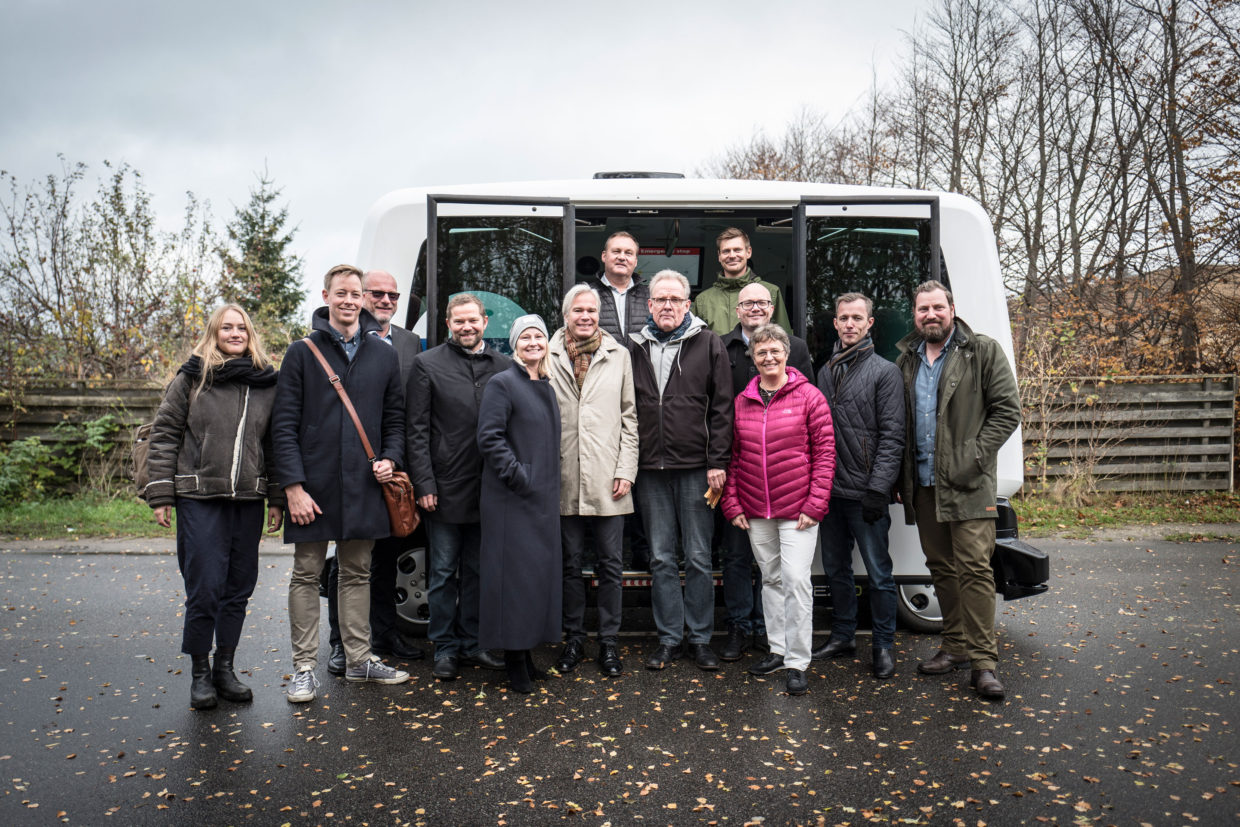
Huge potential for self-driving shuttles
READ MORE ABOUT THE PROJECT HERE

READ MORE ABOUT THE PROJECT HERE
LINC is one of the largest project with self-driving shuttles in Denmark. Here the shuttles are tested in natural urban environments with everyday passengers who require public transport. The purpose is to develop public transport so that it is also an attractive and green choice for citizens in the future.
Through the tests, LINC collects impressions about how the shuttles operate and the passengers’ experiences on the self-driving shuttles. At the same time, LINC wants to develop the self-driving shuttles so that in the future they can provide citizens with an intelligent service that “comes when you call” and can solve the issue for citizens of covering the first and last-mile to the workplace or home.
The project’s experience will be able to give urban planners insight into the infrastructure – physically and digitally – that self-driving shuttles require. It can prepare city planners for designing sustainable cities that are “liveable cities” – as the shuttles are quiet and run on electricity, and do not, therefore, emit harmful particulate pollution and CO2.
The shuttles are tested at DTU Campus in the City of Lyngby and demonstrated in the City of Albertslund and Hersted Industrial Park in Albertslund.
The test areas are located in one of Denmark’s largest urban development areas, where the Greater Copenhagen Light Rail is being built between 2018 and 2025. The area covers a total of ten municipalities, where the 28 kilometres of light rail will pass through 29 stations.
When self-driving shuttles are connected to, for example, a station along the new light rail, it will be possible to create better public transport or even private transport that brings passengers closer to their destinations and reduces their travel time. This will make it more attractive for people to use green and collective modes of intelligent transport systems in the future.
The self-driving shuttles have the potential to make the light rail reach further. By creating a good connection between the 29 light rail stations and shuttles, the project can contribute to the success of light rail and vice versa.
Self-driving buses have huge potential. However, there are some challenges to be overcome – and it is precisely those that the project will help identify and solve.
Once that’s done, the benefits of self-driving buses will be vast:
LINC is a project that brings together several actors across municipalities, companies and knowledge institutions to contribute experience and knowledge about a new and innovative area.
Partners in the project are: Municipality of Albertslund , Municipality of Gladsaxe, Nobina Danmark A/S, IBM Danmark ApS, The Technical University of Denmark, Roskilde University and Gate 21.
The project is funded by partners and the EU programme Urban Innovative Actions (UIA), which is supporting the project with 25 million DKK.
Read more about the project on UIA’s official website.
March 2018 – August 2021.
Kenneth Jørgensen,
Senior project manager LINC, Gate 21
The project LINC was previously named TUPPAC – Transforming Urban Planning Providing Autonomous Collective Mobility.